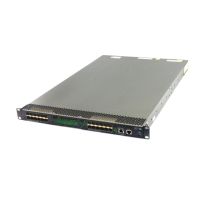153
Ste
Command
Remarks
2. Configure the temperature
alarm thresholds.
temperature-limit slot slot-number
hotspot sensor-number lowlimit
warninglimit [ alarmlimit ]
To view the default settings, use the
undo temperature-limit command
to restore the defaults and then
execute the display environment
command.
The high-temperature alarming
threshold must be higher than the
high-temperature warning
threshold. The high-temperature
warning threshold must be higher
than the low temperature
threshold.
Disabling all USB interfaces
You can use USB interfaces to upload or download files. By default, all USB interfaces are enabled. You
can disable USB interfaces as needed.
To disable all USB interfaces:
Ste
Command
Remarks
1. Enter system view.
system-view N/A
2. Disable all USB interfaces.
usb disable
By default, all USB interfaces are enabled.
Before executing this command, use the umount
command to unmount all USB partitions. For
more information about this command, see
Fundamentals Command Reference.
Verifying and diagnosing transceiver modules
Verifying transceiver modules
You can use one of the following methods to verify the genuineness of a transceiver module:
• Display the key parameters of a transceiver module, including its transceiver type, connector type,
central wavelength of the transmit laser, transfer distance, and vendor name.
• Display its electronic label. The electronic label is a profile of the transceiver module and contains
the permanent configuration, including the serial number, manufacturing date, and vendor name.
The data is written to the storage component during debugging or testing.
To verify transceiver modules, execute the following commands in any view:
Task Command Remarks
Display the key parameters of
transceiver modules.
display transceiver { interface
[ interface-type interface-number ] }
N/A

